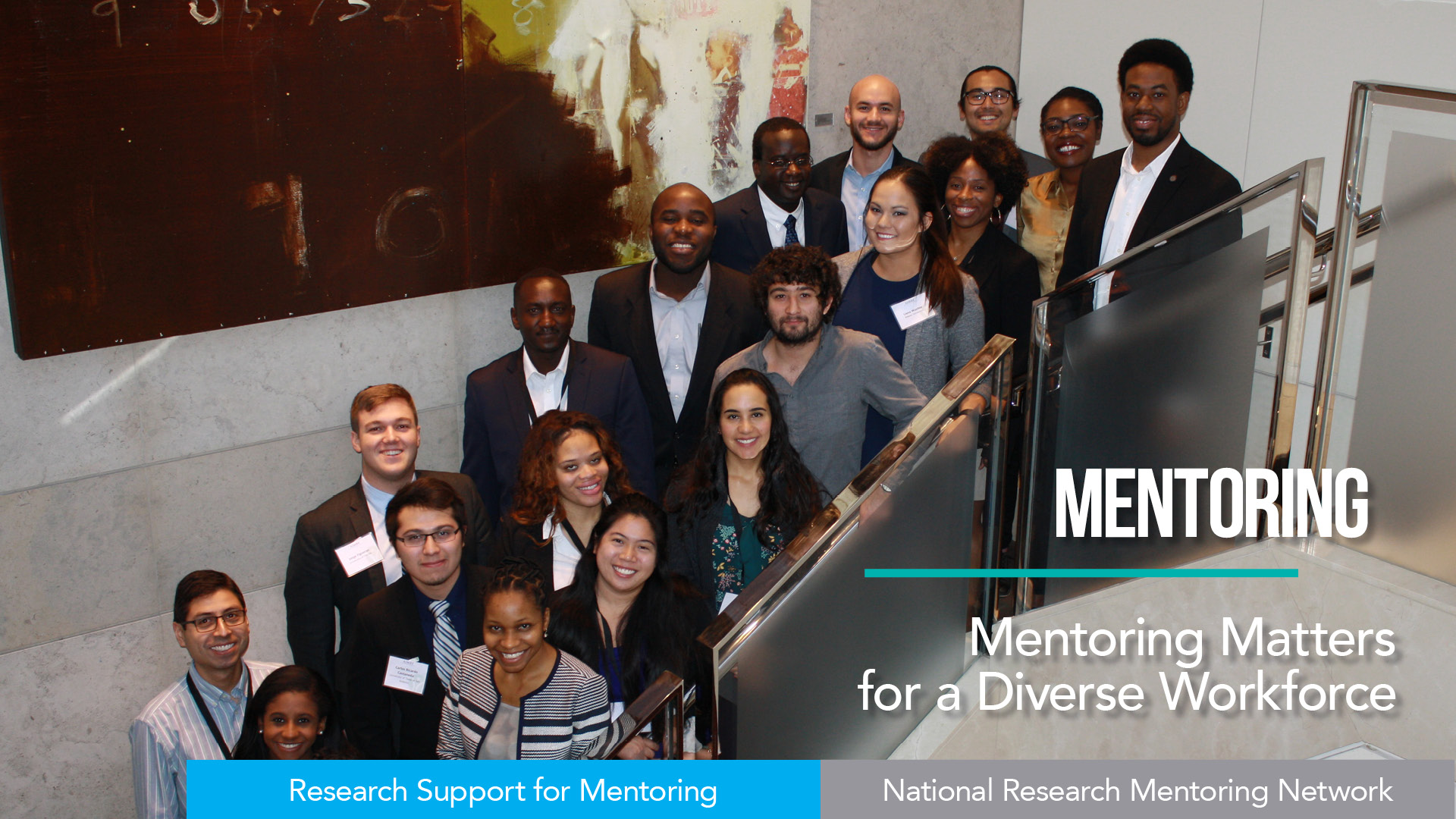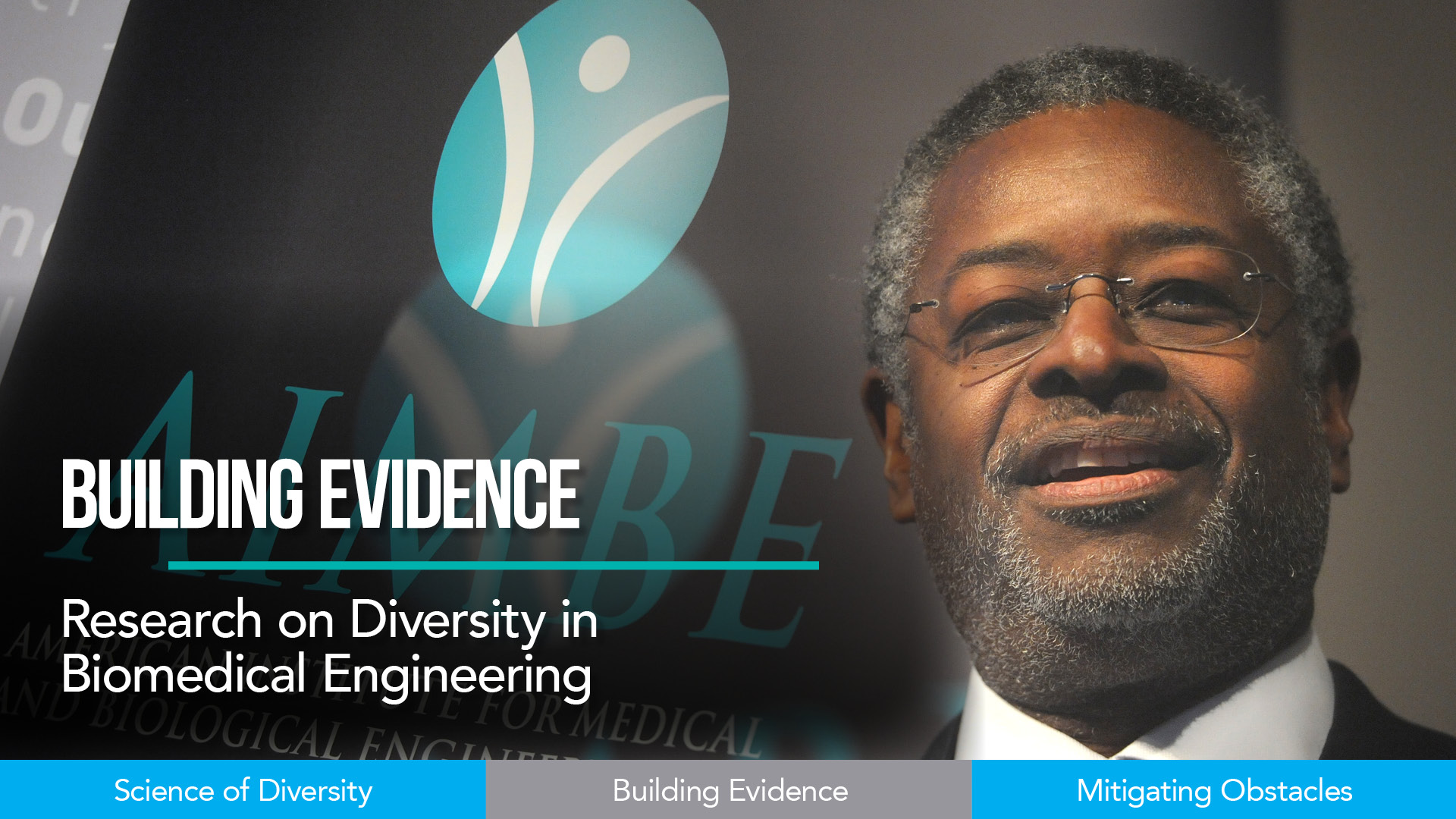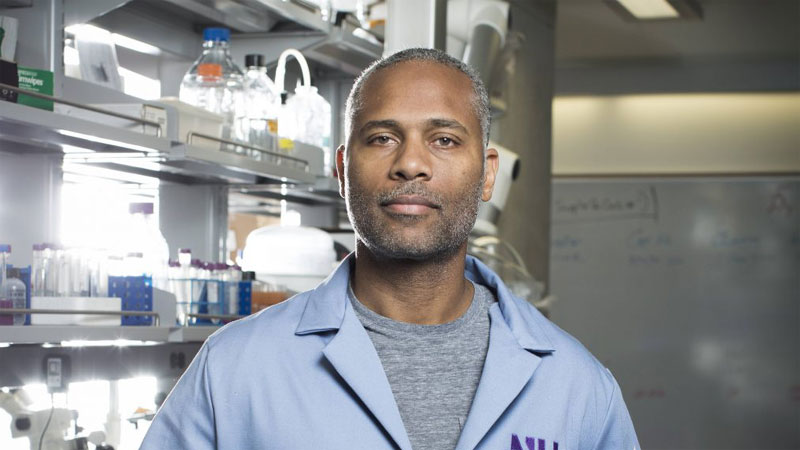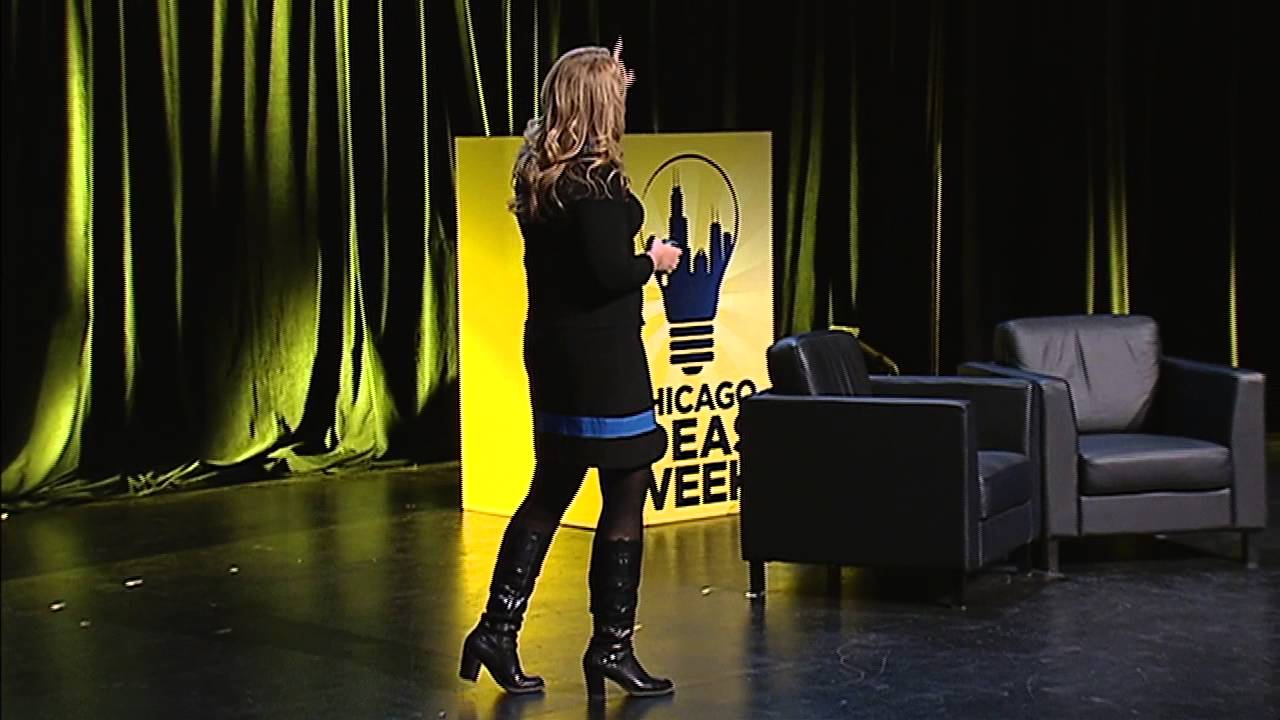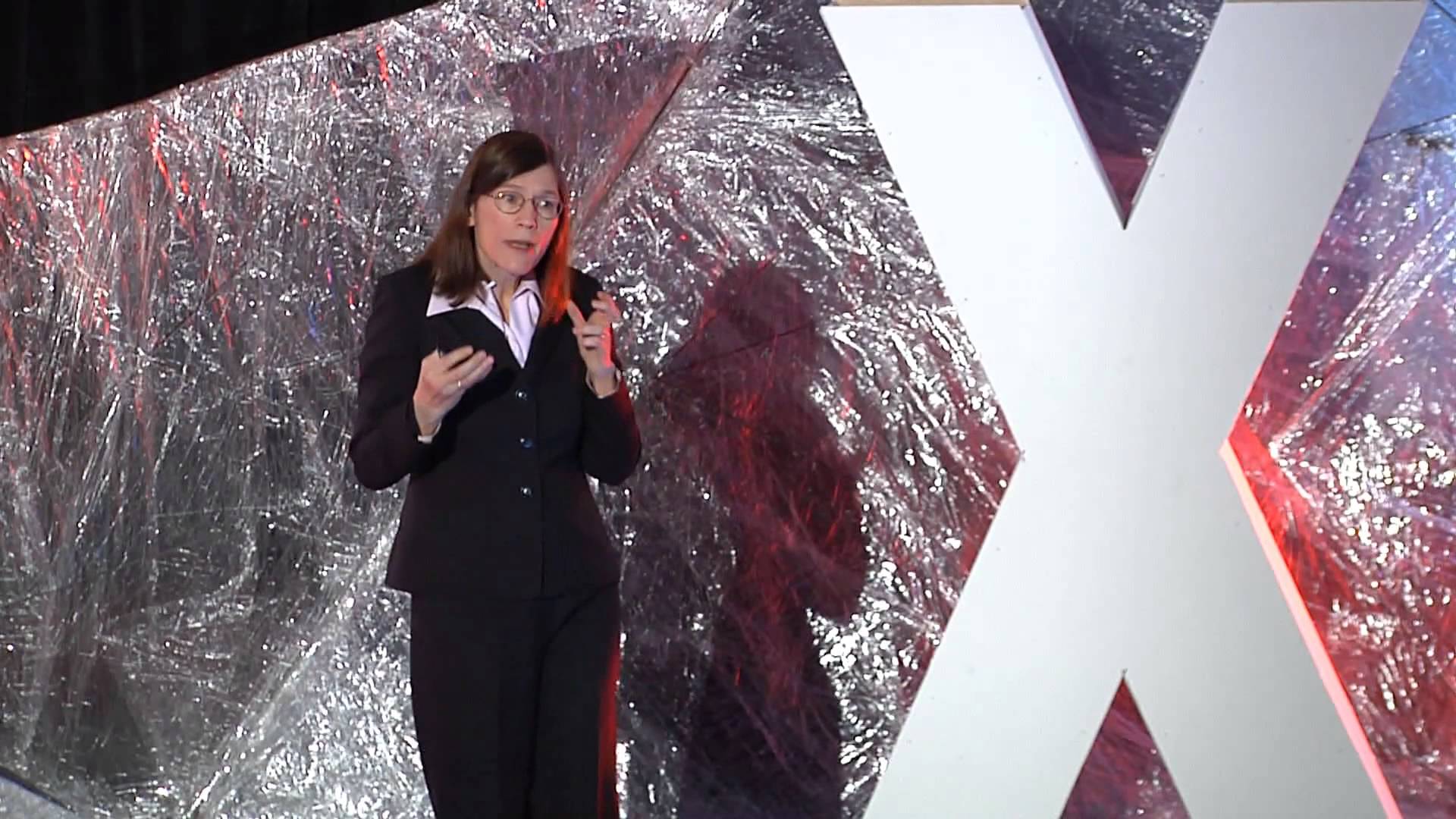ENGINEERING DIVERSITY
Black/African American and Latinx prime-age adults are roughly a third (33 percent) of the adult population, but just 15 percent of engineers. They continue to lag in terms of admissions to engineering programs, completion of degrees, occupational penetration, and tenure in engineering jobs.
Women are also underrepresented and underpaid in engineering. Women represent a little less than half of the employed prime-age population, but they only represent 16 percent of engineers. Women’s representation in engineering occupations has been improving, but barely.
Black/African American and Latinx engineers have lower levels of educational attainment than other engineers, but even when they have equal education, they are paid less.
FEATURED VIDEOS
For more videos from award-winning, diverse Biomedical Engineers, CLICK HERE.
- Regenerative Engineering | Guillermo Ameer | Northwestern Engineering
- The Limit of Human Performance | Cynthia Bir | Chicago Ideas
- A Temporary Tattoo that Brings Hospital Care to the Home | Todd Coleman | TEDMED
- Targeting Disease with Nanoparticles | Omolola Eniola-Adefeso | Michigan Engineering
- Dr Ranu Jung Interview on Neural Enabled Prostheses | Ranu Jung | CBS 4 Miami
- Learning How to Learn | Barbara Oakley | TEDxOaklandUniversity
- The Future of Medicine is Personal | Molly Shoichet | TEDxToronto
- Behind the Scenes | Gordana Vunjak-Novakovic | Columbia Engineering Magazine
- EPSCoR 2010 Annual Conference | Larry Walker | OSU Bioenergy
African Americans make up 2.1% of tenured/tenure-track faculty in biomedical engineering (2018).
8% of university presidents are Black/African American.
Christine Schmidt elected to prestigious National Academy of Medicine
Christine Schmidt | October 21, 2024
Christine Schmidt elected to prestigious National Academy of Medicine
Christine Schmidt | October 21, 2024
University of Florida Distinguished Professor Christine Schmidt has been elected to the National Academy of Medicine. This prestigious honor follows her election earlier this year to the National Academy of Engineering, making her one of the few exceptional individuals to be recognized by both academies.
Election to the National Academy of Medicine recognizes outstanding professional achievement and commitment to service in the fields of health and medicine. The Academy announced the names of its 100 new members today during its annual meeting in Washington, D.C.
Schmidt, the Pruitt Family Endowed Chair in the J. Crayton Pruitt Family Department of Biomedical Engineering, was selected for her “outstanding leadership, pioneering research, and clinical translation in neural tissue engineering and wound healing.”
Nola Hylton Elected to the National Academy of Medicine
Nola Hylton | October 18, 2024
Nola Hylton Elected to the National Academy of Medicine
Nola Hylton | October 18, 2024
Two UC San Francisco faculty members have been elected to the National Academy of Medicine (NAM) this year, one of the highest honors in the field of health and medicine.
NAM recognizes individuals who have demonstrated outstanding professional achievements and commitment to service in the medical sciences, health care and public health. The academy elects no more than 100 members a year.
Alicia Fernandez, MD, professor of medicine, was recognized for her work on how language and literacy barriers impact patient care and outcomes; and Nola M. Hylton, PhD, a professor of radiology and biomedical imaging was recognized for developing magnetic resonance imaging (MRI) for breast cancer.
The ‘Enormous’ Promise of Focused Ultrasound Now Coming True
Elisa Konofagou | October 11, 2024
The ‘Enormous’ Promise of Focused Ultrasound Now Coming True
Elisa Konofagou | October 11, 2024
After several years of investigating focused ultrasound as a tool in treating Alzheimer’s, the field took a big leap forward this year.
Elisa Konofagou, PhD, a biomedical engineer who runs the Ultrasound and Elasticity Imaging Laboratory at Columbia University in the City of New York, published the results of her team’s groundbreaking research in July, demonstrating their noninvasive, fully portable system for delivering drugs and immunotherapy to patients with Alzheimer’s disease.
This after West Virginia University researchers established earlier this year how focused ultrasound can be used to sneak medication past the blood-brain barrier, reducing amyloid beta plaques.
Hypoglycemia Controlled by Glucose Responsive Glucagon-Loaded Micelles
Heather Maynard | October 2, 2024
Hypoglycemia Controlled by Glucose Responsive Glucagon-Loaded Micelles
Heather Maynard | October 2, 2024
People with diabetes take insulin to lower high blood sugar. However, if glucose levels plunge too low—from taking too much insulin or not eating enough sugar—people can experience hypoglycemia, which can lead to dizziness, cognitive impairment, seizures or comas. Emergency treatment with the hormone glucagon (GCG) may be needed. Researchers at the University of California, Los Angeles (UCLA) have now developed a method to encapsulate glucagon in glucose-responsive micelles that only release the hormone when blood glucose levels become too low. Tests in mice confirmed that the injected nanocapsules activated only when blood sugar levels dropped dangerously low, and quickly restored glucose levels.
Research leads Andrea Hevener, PhD, Heather Maynard, PhD, and colleagues reported on their developments in ACS Central Science, in a paper titled “A Glucose-Responsive Glucagon-Micelle for the Prevention of Hypoglycemia.
Barbara Shinn-Cunningham Named Mellon College of Science Dean
Barbara Shinn-Cunningham | September 30, 2024
Barbara Shinn-Cunningham Named Mellon College of Science Dean
Barbara Shinn-Cunningham | September 30, 2024
Barbara Shinn-Cunningham has been named Carnegie Mellon University’s Glen de Vries Dean of the Mellon College of Science (MCS), effective Jan. 1, 2025.
Shinn-Cunningham, who will be the eighth dean to lead MCS, joined Carnegie Mellon in 2018 as the founding director of the Neuroscience Institute and the George A. and Helen Dunham Cowan Professor of Auditory Neuroscience. She holds courtesy appointments in the departments of Psychology, Biomedical Engineering and Electrical and Computer Engineering.
“Dr. Shinn-Cunningham’s appointment as the next dean of MCS marks an exciting next chapter for the college,” said Carnegie Mellon Provost James H. Garrett Jr. “Her distinguished research background and proven leadership skills position her to propel the future of science initiative forward and guide MCS toward even greater heights.
Advancing Antiracism, Diversity, Equity, and Inclusion in STEMM Organizations
National Academies
Advancing Antiracism, Diversity, Equity, and Inclusion in STEMM Organizations
National Academies
People from minoritized racial and ethnic groups continue to face numerous systemic barriers that impede their ability to access, persist, and thrive in STEMM higher education and the workforce.
To promote a culture of antiracism, diversity, equity, and inclusion (ADEI) in STEMM, organizations must actively work to dismantle policies and practices that disadvantage people from minoritized groups.
What Can We Do to Combat Anti-Black Racism in the Biomedical Research Enterprise?
NIH
What Can We Do to Combat Anti-Black Racism in the Biomedical Research Enterprise?
NIH
The recent deaths of George Floyd, Ahmaud Arbery, and Breonna Taylor, in addition to the disproportionate burden of COVID-19 on African Americans, are wrenching reminders of the many harms that societal racism, inequality, and injustice inflict on the Black community. These injustices are rooted in centuries of oppression—including slavery and Jim Crow, redlining, school segregation, and mass incarceration—that continue to influence American life, including the biomedical research enterprise. Despite leading an NIH Institute whose mission includes building a diverse scientific workforce, at NIGMS we’ve struggled with what an adequate response to this moment would be, knowing that the systems that mediate the distinct and disparate burdens Black students, postdocs, and scientists face are complex and often aren’t easily moved with the urgency that they demand. With that in mind, below we share thoughts on what each of us who is in the majority or in a position of power can do to help break the cycles of racial disparities that are woven into the fabric of the biomedical research enterprise and that limit opportunities Link to external web site for Black scientists Link to external web site.
Institutional structures, policies, and cultures Link to external web site, including those in the biomedical research enterprise, all contribute to racial inequality and injustice. This fact was laid bare for us by the responses to the request for information (RFI) we issued in 2018 on strategies to enhance successful postdoctoral career transitions to promote faculty diversity. Respondents cited bias and discrimination—including racism—most frequently as a key barrier to postdoctoral researchers attaining independent faculty positions.
Combating sexual harassment
Science
Combating sexual harassment
Science
Sexual harassment, including gender harassment, presents an unacceptable barrier that prevents women from achieving their rightful place in science, and robs society and the scientific enterprise of diverse and critical talent. As the largest single funder of biomedical research in the world, the U.S. National Institutes of Health (NIH) bears a responsibility to take action to put an end to this behavior. In 2019, the NIH began to bolster its policies and practices to address and prevent sexual harassment. This included new communication channels to inform the agency of instances of sexual harassment related to NIH-funded research. This week, the NIH announces a change that will hold grantee institutions and investigators accountable for this misconduct, to further foster a culture whereby sexual harassment and other inappropriate behaviors are not tolerated in the research and training environment.
Last year, an Advisory Committee to the Director (ACD) of the NIH presented a report and recommendations to end sexual harassment. A major theme of this report was the need for increased transparency and accountability in the reporting of professional misconduct, especially sexual harassment. The cases of sexual harassment that surfaced in the wake of the U.S. National Academies of Sciences, Engineering, and Medicine (NASEM) 2018 report highlighted a substantial gap in the NIH’s oversight of the research enterprise: There was no straightforward mechanism for the agency to learn of sexual harassment or other misconduct taking place at grantee institutions in the context of NIH-funded research. It was not uncommon for the NIH to discover such cases through the media, amid rightful public outcry. Holding institutions and investigators accountable for this behavior was challenging.
White Academia: Do Better.
Medium
White Academia: Do Better.
Medium
Over the past couple of weeks, our nation has been confronted with ugly truths and hard history revealing how systemic racism rears its head in almost every space. Since the COVID-19 pandemic has slowed down our typical lifestyles, people seem to be listening.
This moment feels very different from other situations when we had to address human rights in the context of race relations in the United States. With that comes a host of emotions that White people have rarely had to deal with because of their racial privilege, and this includes White people working in academia.
Like many Black faculty, and Black people in general, I have received messages and texts from White colleagues apologizing, expressing their guilt and remorse, and asking what they can do to support their Black colleagues and friends.
Guidelines for Diversity & Inclusion in Crisis
Juan E. Gilbert, PhD
Guidelines for Diversity & Inclusion in Crisis
Juan E. Gilbert, PhD
I am writing these guidelines in response to the recent events that have impacted the Black community, specifically, the Black computing community. As the Department Chair of the Computer & Information Science & Engineering (CISE) Department at the University of Florida, I lead, one of, if not, the nation’s most diverse computing sciences (CS) department. We have the nation’s most Black CS faculty and PhD students. We are one of the top CS departments for the number of female faculty. As a researcher, I have had the honor of producing the nation’s most Black/African-American CS PhDs. I have also had the honor of hiring and promoting the most Black faculty in CS. My experiences span more than 20 years and those experiences are the foundation for these guidelines.



